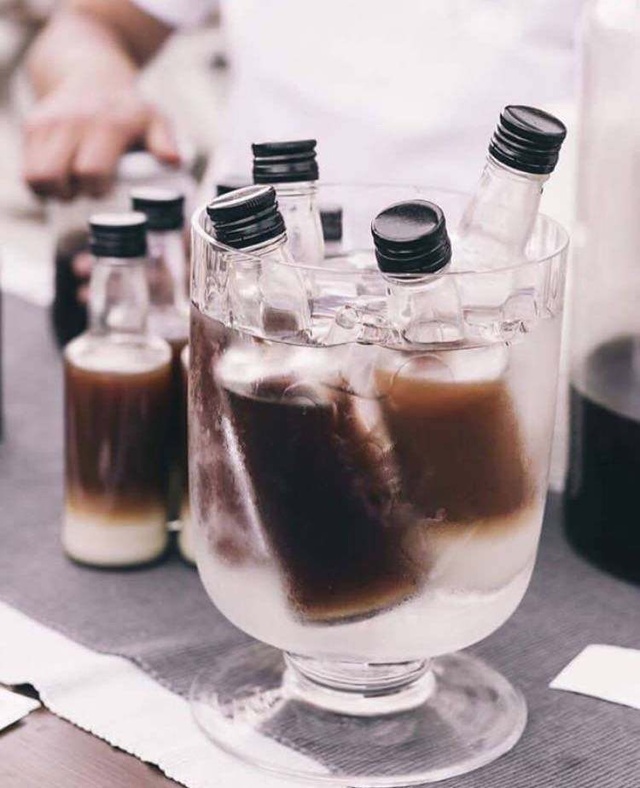The history, culture, stories and allusions of the holy boutique beans of the Hope Manor in Colombia.

For professional baristas, please follow the coffee workshop (Wechat official account cafe_style)
The history, culture, stories and allusions of the holy boutique beans of the Hope Manor in Colombia.
Colombia hopes that the proportion of defective beans screened by hand is about 4%, the weight loss ratio of roasted to city coffee beans is 14%, and the proportion of empty shell beans to bad beans is 6%. The fresh aroma of forage grass is like walking on the grass after rain, raising the steaming temperature a little bit and baking in a steeper heating way will retain more aroma and sweet and sour changes. this is the right choice for the manor.
Light baking City (fragrance): Umei acid, which is rare in Colombian coffee, but not astringent and bright and delicate, smooth taste is not traditional Colombian rich style but a bit of Costa Rican coffee flavor, acid turns sweet plum very quickly.
Re-baking (general C): the aroma of raisins is based on the background, the taste is surrounded by the range of fruit maple syrup, the sweet distribution of fruit milk on the tongue will not feel particularly thick, as the coffee temperature gradually drops, the whole feeling goes to a more round and sweeter depth.
Hope Manor is definitely the top manor in Colombia.
Its manor won the Best of Panama Best Panama Champion (2008) and runner-up (2009) *. 2012 even arranged three seats in the top ten of SCAA Coffee of the Year with three products, the incredible number 2, 3 and 7. In the newly announced GFA (Good Food Award), Hope Manor has also become the only award-winning estate outside Ethiopia, Kenya and Panama.
As for the high score record of more than 95 points on Coffee Review, it is even more dazzling, making the editor's summary so soft that he simply gives up. ****
Hope Manor has a total of four estates: Esperanza, Las Margaritas, Cerro Azul and Potosi.
Won the Best of Panama Best Panama Champion (2008) and runner-up (2009).
2012 even arranged three seats in the top ten of SCAA Coffee of the Year with three products, the incredible number 2, 3 and 7.
In GFA (Good Food Award), which has just been announced, Hope Manor has also become the only award-winning estate outside Ethiopia, Kenya and Panama.
2014 WBC runner-up competition bean style
2012, 2013 American Brewers Cup second consecutive Championship Bean style
Top 16 Coffee Reivew winners in 2014
Top 25 of 2014 Coffee Reivew
Top 08 Coffee Reivew of the year 2013
October 2014 Coffee Reivew 95
April 2014 Coffee Reivew 95
August 2013 Coffee Reivew 96
November 2012 Coffee Reivew 96
National Columbia
Production area Valle de Cauca
Altitude 1400-1650m
Variety Pacamara
Treatment of sun exposure
Flavor description: dry aroma with strong aroma of wine and flowers. Sipping with sweet and sour flavors of pineapple, longan, black plum, blackcurrant, passion fruit, blueberry and grape. It is a tropical fruit wine, lively and bright sour beans.
Columbia Hope Manor Caf é Granja La Esperanza
Cafe Granja La Esperanza is made up of six farmland in El Valle del Cauca and Cundinamarca under the Herrera family, owned by Rigoberto Herrera.
Farmland in Colombia includes La Esperanza, Cerro Azul, Potosi and Las Margaritas, Hawaii, covering eight microclimate zones.
La Esperanza, Cerro Azul, Potosi and Las Margaritas are all located in Trujillo. Valle del Cauca is the province of western Colombia. The province faces the Pacific Ocean.
Trujillo is in the mountains to the east, which has relatively flat terrain and is also located to the west of the Cauca River, ranging from 1000 to 3000 meters above sea level. The warm climate of the valley meets the cold air of the Pacific Ocean, making the average temperature and rainfall suitable for coffee growth.
The soil suitable for planting in this area contains volcanic ash and organic matter, but the phosphorus quality in this area is generally low, so Caf é Granja La Esperanza also prepares its own natural fertilizers to ensure the health of coffee trees and the quality of coffee beans.
Interestingly, there is a coffee tree called Laurina (BOURBON species) grown in Granja La Esperanza. Its fruit is naturally decaffeinated, but it produces less because the fruit is more fragile than the average coffee fruit.
There are Caturra, Geisha, Moka,Bourbon (including red, yellow and Tekizik), Laurina, Pacamara, San Bernardo and Pache in La Esperanza garden.
Height comparison:
La esperanza:1400-1700 m
Cerro Azul:1700-2000 m
Potosi:1400-2000 m
Las Margaritas:1400-1800 m
Area comparison:
La esperanza:34
Cerro Azul:18 ha
Potosi:52 ha
Las Margaritas:34 ha
Geisha short story of Caf é Granja La Esperanza:
The La Cardeida estate in Boquete, Panama, Panama, which the Herrera family rented in 2005, is next to La Esmeralda, which is famous for its Geisha. At first, the botanist Hernando Tapasco helped to plant the Geisha variety, and at the beginning, the breeding team spent two years in Panama to learn the characteristics of geisha. Successful in "The Best of Panama" in 2008, La Cardeida's Geisha won the championship. In 2012, Coffee of the year at SCAA won second, third and seventh places for washing Geisha under Cerro Azul,Las Magaritas and Buenos Aires, respectively.
Geisha varieties are also grown in La Esperanza, including rare organic certified varieties (Geisha organica). All fruits are harvested by hand, and workers harvest them more frequently than usual to ensure their quality.
Other manor features:
☁ Cerro azul
Next to the La Esperanza, the terrain is relatively high. although there is strong sunshine, there are clouds at sunset and sunrise, reducing moisture evaporation and cooling effect. The location of the valley converts the Pacific sea breeze into cloudy clouds, coupled with volcanic soil and sufficient Rain Water, which is very suitable for Geisha growth. Although about seven varieties and about 45000 Geisha have been planted here, the naming is so strict that only 5000 to 7000 of them can show the characteristics of Cerro azul. What can be called AAA reserve is two of the seven varieties, and if they grow at an altitude of 1800-2000 meters.
The coffee is washed with full water, which includes 16 hours of fermentation, then the water is removed in the dryer and the sun is used for raised bed drying. The harvesters here must undergo five months of training.
The suitable climate in Colombia provides a real "natural pasture" for coffee. Coffee trees in Colombia are mainly cultivated in the Andes, on steep slopes about 1300 meters above sea level, where the annual temperature is about 18 degrees Celsius, annual rainfall is 2000 to 3000 millimeters, latitude 1 °- 11 °15 north, longitude 72 °- 78 °west, the specific range of elevation is more than 2.000 meters. A special combination of factors, latitude, altitude, soil, plant origin of species and varieties of coffee production in Colombia's coffee growing area, rain patterns produced by the climate of the coffee growing area and tropical convergence, changing topography, luminosity, favorable temperature range throughout the year, moderation and Rain Water's distribution And include some common cultural practice areas in the process of selective logging and transformation, including washing and drying. Very suitable for the growth of coffee, mild climate, humid air, and can be harvested regardless of season
The main varieties of Colombian coffee are small grains of coffee. Plants are small trees or large shrubs, 5-8 m tall, usually much branched at base; old branches gray-white, nodes dilated, young branches glabrous, compressed. Leaves thinly leathery, ovate-lanceolate or lanceolate, 6-14 cm long and 3.5-5 cm wide, apex long acuminate, acuminate part 10-15 mm long, base cuneate or slightly obtuse, rarely rounded, entire or shallowly wavy, both surfaces glabrous, lower vein axils with or without small pores; midrib raised on both surfaces of leaf, 7-13 on each side of lateral veins; petiole 8-15 mm long Stipules broadly triangular, arising from the tip of the upper part of the young branch conical or awn tip, the tip of the old branch is often protruding tip, 3-6 mm long. Cymes several clustered in leaf axils, each with 2-5 flowers, without a total pedicel or with a very short peduncle; flowers fragrant, with pedicels 0.5-1 mm long; bracts base ±connate, dimorphic, 2 broadly triangular, nearly equal in length and width, the other 2 lanceolate, 2 times as long as wide, leaf-shaped; calyx tubular, 2.5-3 mm long, calyx eaves truncate or 5-denticulate. Corolla white, length varies from breed to breed, generally 10-18 mm long, apically often 5-lobed, rarely 4-or 6-lobed, lobes often longer than Corolla tube, tip often obtuse; anthers protruding from Corolla tube, 6-8 mm long; style 12-14 mm long, stigma 2-lobed, 3-4 mm long. Berries broadly elliptic, red, 12-16 mm long, 10-12 mm in diameter, exocarp dura, mesocarp fleshy, sweet at maturity; seeds raised abaxially, ventral flat, longitudinally grooved, 8-10 mm long and 5-7 mm in diam. The suitable climate in Colombia from March to April provides a real "natural pasture" for coffee. Coffee trees in Colombia are mainly cultivated in the Andes, on steep slopes about 1300 meters above sea level, where the annual temperature is about 18 degrees Celsius, annual rainfall is 2000 to 3000 millimeters, latitude 1 °- 11 °15 north, longitude 72 °- 78 °west, the specific range of elevation is more than 2.000 meters.
☁ Las Magaritas
A little further than Cerro Azul, in the mountains of central Colombia, part of the Andes. The soil, height and weather are the best, so there are many rare species here, such as Pacamara, Red Bourbon, Yellow Bourbon, Tekisic, Mokka. In addition to Geisha, there is also a kind called Sudan Rume, which has bronze leaves. This kind of tree can resist the diseases of many coffee trees and is mostly used for mixed scaffolding. It is said that the cup test is not inferior to Geisha, but the growth is not as stable as Geisha, so it has not been propagated in large numbers.
Las Margaritas's Geisha needs to be fermented for 14 hours and washed in full sunlight. Due to the humid climate here, there are few other beans that are completely dependent on the sun.
Let's compare the appearance of Geisha, Sudan Rume and Laurina coffee seedlings.
☁ Potosi
Farmland and Las Magaritas face. It has been planted since the time of Rigoberto Herrera's great-grandfather, so the varieties are mainly Colombian variety and caturra.
Caturra coffee tree
Apart from attaching importance to the quality of coffee, the manor also pays attention to environmental protection and staff welfare, and has implemented different ways to improve talents, optimize the environment and productivity.
Colombia Colombia
Population: 47073000
Colombia has well-defined growing areas and the impressive variety of coffee they produce. Whether you want round, heavy coffee, refreshing, fruit-flavored (or somewhere in between), Columbia beans are most likely. Colombia is divided by geographical location, and it is not difficult to find that the coffee there has many common characteristics. If you like coffee in one area, other areas will like it as well. Coffee trees get double cropping in Colombia, the second main harvest and harvest each year, which is called "mitaca" locally.
CAUCA
CAUCA Cauca, best known for its coffee cultivation around Inza and Meseta de Popayan in Popayan, provides favorable growth conditions at high altitudes on the plateau and near the equator and surrounding mountains, which protects coffee from Pacific humidity and southern trade winds. This creates a very stable climate all the year round. In addition, coffee in the area has significant volcanic soil. According to historical records, there is a single rainy season from October to December every year.
Altitude: 1700-2100m
Harvest: March-June (major crops), November-December (mitaca crops)
TOLIMA
TOLIMA Tolima, one of the strongholds of Colombia's notorious rebel group Revolutionary Armed Forces of Colombia (FARC), until recently held control. Tolima has suffered from fighting in recent years, which makes the visit difficult. High-quality coffee from the region is grown by small farmers in very small areas and exported through cooperatives.
Altitude: 1200-1900m
Harvest: 3mer-June (main crop) crops October to December (mitaca)
Variety: 9% Typica 74% Catura 17% Castillo Villa
NARINO
Some of Colombia's highest quality coffee is grown in Narinho, which is arguably the most amazing and complex. Growing coffee in many areas of these high elevations is a challenge, and coffee trees are likely to suffer from leaf blight. However, Narinho is close enough to the equator that the climate is suitable for planting coffee trees. Most of Narinho's 40,000 producers are small farmers, each with a planting area of less than 2 hectares (4.4 acres). Many people form groups and institutions to support each other and interact with FNC. In fact, the average size of the farm is less than 1 hectare (2.2 acres), and only 37 producers own more than 5 hectares (11 acres) of land in the area.
Altitude: 1500-2300 m (4900-7500ft)
Harvest: April-June Variety: 54% Typica, 29% CaturraMagol, 17% Castillo.
HUILA
Wirat has an excellent combination of soil and geographical advantages for growing coffee, and some of the most complex and fruity Colombian coffees come from here. There are more than 70, 000 coffee growers in the area, covering more than 16000 hectares (39500 acres).
Altitude: 1250-2000m
Harvest: September to December (main crop) April to May (mitaca crop)
Main varieties: 11% Typica, 75% Catura, 14% Castillo.
Colombia-Manor of Hope (La Esperanza)
Colombian coffee has long been divorced from the impression of shoddy and base coffee. Through coffee competitions in recent years, people know more about Colombian coffee. Good coffee usually comes from good estates and some small and special producing areas such as Narino, but these coffee production is really not much. Before the coffee competition, Colombian coffee was graded by the size of coffee beans. But this classification only means that there is no relative relationship between the size and quality of coffee beans. "bigger beans are better." this is an outdated grading system. On the contrary, some excellent coffee farms or cooperatives with small yields and small farming areas produce smaller, more round and complete coffee beans, which is the mainstream of coffee in Colombia today, and good quality is the guarantee of price.
Colombian coffee is widely sold and used, mainly because Colombian coffee has a soft and pure taste, and it is very easy to brew coffee beans, so it is very popular in every family and is the best partner for dessert cake. With Colombian coffee, you can enjoy the mellow atmosphere brought by bar without coffee. Whether it is simple black coffee or Colombian coffee formula coffee is a good choice.
Huil in southwestern Colombia is the producer of fine coffee and Tolima in Narino. Almost all the top 10 Colombian coffee competitors come from these three regions, and they are also dominated by small coffee farmers with small yields and small farming areas. La Esperanza Manor is located in the Huil producing area. The coffee farm, which does not belong to individuals or families, is a collection of several coffee farmers to sell under the name of Hope Manor (La Esperanza). It is hoped that the manor will be distributed in the forest at an altitude of 1400 to 1650 meters above sea level to harvest fully mature coffee beans by hand. Coffee farmers adhere to good planting environment and perseverance to control the quality of coffee beans. The winner of the 2007 Colombian Coffee Competition, it also won 9th, 12th and 14th (different coffee growers) in 2008 and was given a high score of 93 by American coffee master Kenneth Davids (author of coffee review and self-baking) in November 2008. it is the top manor in Colombia.
Important Notice :
前街咖啡 FrontStreet Coffee has moved to new addredd:
FrontStreet Coffee Address: 315,Donghua East Road,GuangZhou
Tel:020 38364473
- Prev

Colombian Hope Manor single bean variety, brand recommendation and manor introduction
For the exchange of professional baristas, please follow the coffee workshop (Wechat official account cafe_style) Columbia Hope Manor single bean types, brand recommendation and manor introduction. As for the record of more than 95 points on Coffee Review, it is even more confusing, making the editor's summary so soft that he has to give up. * Hope Manor has four manors: Esperanza, Las
- Next

Difference, distinction and award-winning situation of single-taste beans in Niagara Heavenly Manor
For the exchange of professional baristas, please pay attention to the coffee workshop (Wechat official account cafe_style). This is the first time that travel notes have been published on the subject of the upstream coffee industry. My aim is to enhance the downstream industry's understanding of the upstream industrial chain, and to enable the public to peep into the story before the coffee beans enter the bag through interview photography. With a pen
Related
- Does Rose Summer choose Blue, Green or Red? Detailed explanation of Rose Summer Coffee plots and Classification in Panamanian Jade Manor
- What is the difference between the origin, producing area, processing plant, cooperative and manor of coffee beans?
- How fine does the espresso powder fit? how to grind the espresso?
- Sca coffee roasting degree color card coffee roasting degree 8 roasting color values what do you mean?
- The practice of lattes: how to make lattes at home
- Introduction to Indonesian Fine Coffee beans-- Java Coffee producing area of Indonesian Arabica Coffee
- How much will the flavor of light and medium roasted rose summer be expressed? What baking level is rose summer suitable for?
- Introduction to the characteristics of washing, sun-drying or wet-planing coffee commonly used in Mantenin, Indonesia
- Price characteristics of Arabica Coffee Bean Starbucks introduction to Manning Coffee Bean Taste producing area Variety Manor
- What is the authentic Yega flavor? What are the flavor characteristics of the really excellent Yejasuffi coffee beans?

